I have a solution with javascript.
// check if there are input[type="number"] to prevent errors
if (document.querySelector('input[type="number"]')) {
// add event for each of them
document.querySelectorAll('input[type="number"]').forEach(function(el) {
el.addEventListener('change', function (e) {
// on change submit the parent (closest) form
e.currentTarget.closest('form').submit()
});
});
}
Actually it is short but if you want to support Internet Explorer you have to add the polyfill script too. Internet Explorer does not support closest() with this snippet below we teach it.
// polyfills for matches() and closest()
if (!Element.prototype.matches)
Element.prototype.matches = Element.prototype.msMatchesSelector || Element.prototype.webkitMatchesSelector;
if (!Element.prototype.closest) {
Element.prototype.closest = function(s) {
var el = this;
do {
if (el.matches(s)) return el;
el = el.parentElement || el.parentNode;
} while (el !== null && el.nodeType === 1);
return null;
};
}
Ajax form submit to node.js
If you are interested in an ajax solution I put some code below just to blow your mind ;-) It should work instantly, I use it on one of my sites. You could use jQuery and save lines of code but I like it pure. (The ajax function and polyfills are utils so paste it anywhere)
HTML (example)
<form>
<input type="hidden" name="field" value="field1">
<input type="hidden" name="style" value="style1">
<input type="number" name="value">
<input type="submit" value="update">
</form>
<form>
<input type="hidden" name="field" value="field2">
<input type="hidden" name="style" value="style2">
<input type="number" name="value">
<input type="submit" value="update">
</form>
Javascript: event listener and prepare ajax call (note the callbacks).
// check if there are forms to prevent errors
if (document.querySelector('form')) {
// add submit event for each form
document.querySelectorAll('form').forEach(function (el) {
el.addEventListener('submit', function (e) {
e.currentTarget.preventDefault();
submitData(e.currentTarget);
});
});
}
// check if there are input[type="number"] to prevent errors
if (document.querySelector('input[type="number"]')) {
// add change event for each of them
document.querySelectorAll('input[type="number"]').forEach(function (el) {
el.addEventListener('change', function (e) {
submitData(e.currentTarget.closest('form'));
});
});
}
// collect form data and send it
function submitData(form) {
// send data through (global) ajax function
ajax({
url: '/change',
method: 'POST',
data: {
field: form.querySelector('input[name="field"]').value,
style: form.querySelector('input[name="style"]').value,
value: form.querySelector('input[name="value"]').value,
},
// callback on success
success: function (response) {
// HERE COMES THE RESPONSE
console.log(response);
// error is defined in (node.js res.json({error: ...}))
if (response.error) {
// make something red
form.style.border = '1px solid red';
}
if (!response.error) {
// everything ok, make it green
form.style.border = '1px solid green';
}
// remove above styling
setTimeout(function () {
form.style.border = 'none';
}, 1000);
},
// callback on error
error: function (error) {
console.log('server error occurred: ' + error)
}
});
}
As told javascript utils (paste it anywhere like a library)
// reusable ajax function
function ajax(obj) {
let a = {};
a.url = '';
a.method = 'GET';
a.data = null;
a.dataString = '';
a.async = true;
a.postHeaders = [
['Content-type', 'application/x-www-form-urlencoded'],
['X-Requested-With', 'XMLHttpRequest']
];
a.getHeaders = [
['X-Requested-With', 'XMLHttpRequest']
];
a = Object.assign(a, obj);
a.method = a.method.toUpperCase();
if (typeof a.data === 'string')
a.dataString = encodeURIComponent(a.data);
else
for (let item in a.data) a.dataString += item + '=' + encodeURIComponent(a.data[item]) + '&';
let xhReq = new XMLHttpRequest();
if (window.ActiveXObject) xhReq = new ActiveXObject('Microsoft.XMLHTTP');
if (a.method == 'GET') {
if (typeof a.data !== 'undefined' && a.data !== null) a.url = a.url + '?' + a.dataString;
xhReq.open(a.method, a.url, a.async);
for (let x = 0; x < a.getHeaders.length; x++) xhReq.setRequestHeader(a.getHeaders[x][0], a.getHeaders[x][1]);
xhReq.send(null);
}
else {
xhReq.open(a.method, a.url, a.async);
for (let x = 0; x < a.postHeaders.length; x++) xhReq.setRequestHeader(a.postHeaders[x][0], a.postHeaders[x][1]);
xhReq.send(a.dataString);
}
xhReq.onreadystatechange = function () {
if (xhReq.readyState == 4) {
let response;
try {
response = JSON.parse(xhReq.responseText)
} catch (e) {
response = xhReq.responseText;
}
//console.log(response);
if (xhReq.status == 200) {
obj.success(response);
}
else {
obj.error(response);
}
}
}
}
// (one more) polyfill for Object.assign
if (typeof Object.assign !== 'function') {
// Must be writable: true, enumerable: false, configurable: true
Object.defineProperty(Object, 'assign', {
value: function assign(target, varArgs) {
// .length of function is 2
if (target === null || target === undefined) {
throw new TypeError('Cannot convert undefined or null to object');
}
var to = Object(target);
for (var index = 1; index < arguments.length; index++) {
var nextSource = arguments[index];
if (nextSource !== null && nextSource !== undefined) {
for (var nextKey in nextSource) {
// Avoid bugs when hasOwnProperty is shadowed
if (Object.prototype.hasOwnProperty.call(nextSource, nextKey)) {
to[nextKey] = nextSource[nextKey];
}
}
}
}
return to;
},
writable: true,
configurable: true
});
}
// polyfills for matches() and closest()
if (!Element.prototype.matches)
Element.prototype.matches = Element.prototype.msMatchesSelector || Element.prototype.webkitMatchesSelector;
if (!Element.prototype.closest) {
Element.prototype.closest = function (s) {
var el = this;
do {
if (el.matches(s)) return el;
el = el.parentElement || el.parentNode;
} while (el !== null && el.nodeType === 1);
return null;
};
}
In node.js (e.g. express route)
// the route in node.js
app.post('/change', (req, res) => {
// your logic here
let field = req.body.field;
let style = req.body.style;
let value = req.body.value;
// ...
// response result
res.json({
databaseError: false, // or true
additionalStuff: 'message, markup and other things ...',
});
});
